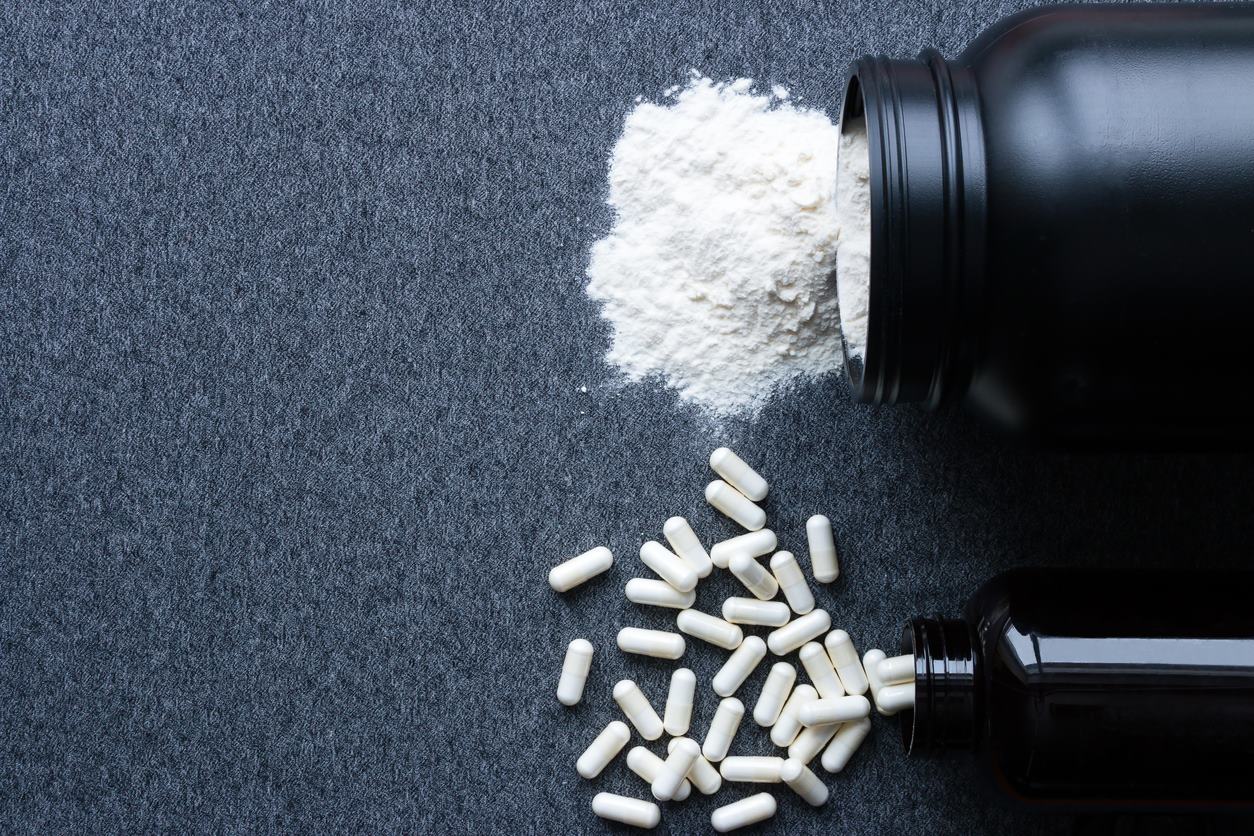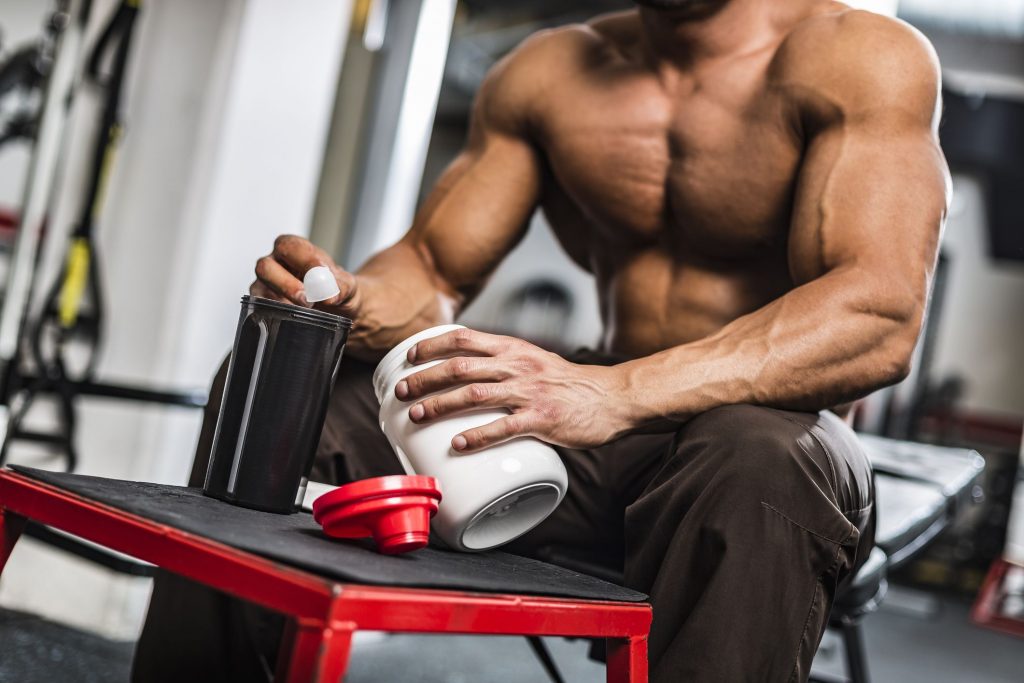
The best online fitness resource you'll ever need. We filter out the BS to ensure you meet your health and fitness goals!

The best online fitness resource you'll ever need. We filter out the BS to ensure you meet your health and fitness goals!

Creatine is amongst the best supplements- if not the best- for improving performance in the gym. It can increase muscle mass, strength, power output and training performance. As all of these elements tend to suffer quite badly during a caloric deficit, it is therefore highly recommended that you combine creatine with your cut. It will go a long way to mitigating the weakness and heightened fatigue perception so common in a deficit and will allow you to push yourself harder than you otherwise would in an effort to maintain good musculature.
Cutting is most closely linked with bodybuilding, though many athletes may find themselves running through periods of cutting and bulking.
During a bulk, you eat a caloric deficit, typically of 500+ calories per day, and work incredibly hard at whatever discipline you are involved in. For bodybuilders, this means more time spent in the gym, lifting heavier weights, for more reps. The combination of added calories and extra training stimulus should lead to weight gain, mostly in the form of muscle.
The cut is the opposite. You take a caloric deficit, typically of 500 grams per day for every pound you want to lose each week. Performance will often be impaired, so this will be no time for hitting personal bests or pushing yourself harder than ever- training will be a little light, a little less intense, and recovery rates will be a little slower.
There are a lot of factors that play into success in cutting.
Some are your own individual characteristics, like:
Other issues that might affect your success can be related to timing and methods. Cutting isn’t just about training: as we will see, nutrition is key to success.
If you’re a bodybuilder, you will be walking a fine line with regards your body composition. Men competing will need body fat to be well below 10%, whilst women will need it to be in the low teens. This is hard to achieve, especially whilst trying to retain a semblance of performance, and especially whilst trying to maintain the muscle mass you worked so hard to build during your bulk.
To achieve these levels of bodyfat, with decent muscle mass to show off when you achieve them, there will be three main routes you will need to take. These are to perfect your diet, keep resistance training to a standard to retain muscle, and putting in some extra cardio to shave off some extra calories.
Of these, diet is by far the most important. The old truism that ‘you can’t out train a bad diet’ should be front and centre in your mind. Burning 300 calories and having good musculature through cardio won’t remedy eating junk food. It’s also a lot easier to cut out 300 calories from your diet than it is to burn it (we’re comparing not eating a single chocolate bar with going for an hour-long walk.)
However, athletic performance is still key, especially if you’re competing. There is little sense in getting yourself down to 8% bodyfat if you don’t have lean muscle to show off, so you still need to train to a high degree. This is where creatine comes in, proving itself useful even in a cut.
Before we go any further, though, it’s worth noting that many people view creatine with a degree of scepticism. Some mistakenly conflate it with dangerous performance enhancing drugs like HGH or SARMs. Others list potential side effects as a reason to avoid them. This is all far from the truth: creatine is one of the world’s most tested substances and has an incredible safety profile.

Creatine is found naturally in muscle cells: it helps your muscles to produce energy during high-intensity or high-resistance training such as weightlifting or sprinting. Because of this use, it’s very common- if not ubiquitous- to see athletes and lifters use creatine for the above uses: it helps them to generate more muscular power, improve their performance, and ultimately lead to greater progression and hypertrophy.
Creatine shares many chemical similarities with amino acids (which form proteins.) In the body, it is produced from the amino acids glycine and arginine, which is another reason that protein supplementation is also important for athletes. Around 95% of your body’s store of creatine is found in your muscles, with the remaining shared largely between your brain and, liver, pancreas and kidneys.
In terms of dietary creatine, heightened amounts are linked to meat consumption- the more meat you eat, the more creatine you take in, especially if you typically eat joints of meat cut from close to the bone. Therefore, whilst creatine supplementation is crucial to any athlete, it becomes particularly important during a cut, when you will naturally be eating less meat, and for those following plant-based diets, as their intake will of course be lower than average.
Exercise and muscle mass also play important roles in determining your body’s creatine stores, so the more muscle you have, and the harder you train (especially in a deficit), the more you will typically need as supplementation.
You will need to replace anything from 1-3 grams of creatine per day. However, as levels required are largely based on your muscular needs, muscle mass and hormones like testosterone, all of which are usually raised for bodybuilders, more may be required. Those who perform high-intensity exercises like weightlifting or sprinting will typically drain stored creatine faster. If this applies to you, you’ll need to take in more to keep your muscles powered. Anything between 5-10 grams may be appropriate.
Diets rich in meat and fish have creatine and help with replenishing your body’s creatine stocks. So will supplementation.
Creatine supplementation quite intuitively increases the body’s stores, in the form of accessible phosphocreatine. This is a perfect energy source for intense training. It aids in your body’s production of adreno triphosphate (ATP), which is a high-energy molecule that serves as your muscles’ main energy source. It the key energy source for heavy lifting and high intensity training.
Increasing ATP stocks will lead to greater contractile power through your muscles and will allow them to work for longer.
Creatine supplementation can aid in muscle gain as follows:
However, creatine has more to give than merely boosting athletic performance- though this is a very worthy end in and of itself. It provides a few notable health benefits, including protecting against neurological disorder and offsetting lethargy and fatigue perception in day-to-day living. In fact, the impacts of creatine on your brain are worth considering in their own right, especially during a cut when carb levels may be low and your cognition and mental alertness may feel sluggish.
We saw earlier that a small portion of your body’s creatine stores are in your brain. Your brain requires an adequate supply of ATP in order to function optimally. It should therefore be no surprise that supplementation should have some benefits for your mental and cognitive health and function. As these are often depleted by the fatigue inherent in maintaining a caloric deficit whilst still trying to train, this is all the more important during a cutting phase.
In fact, aside from merely aiding optimal function, there is data enough to suggest that creatine supplementation may improve and allay the worst effects of the following conditions:
Much of this becomes more marked in older adults, those already at risk of neurological diseases and, due to reasons mentioned above, those following a plant-based diet. In fact, vegetarians are likely to see a 50% improvement in memory and 20% in measured intelligence when supplementing with creatine.

Taking creatine supplements helps you to increase lean muscle mass, whilst enhancing strength and power, as seen above.
In addition, it will help you to retain muscle and lower the risk of injury during a cut. Part of the reason for this is that it brings water into your muscles (it’s also always a good idea to drink plenty of water during a cut, as it protects muscles from breakdown, injury and dehydration.)
Studies have shown that taking creatine during a period of intense training, during a cutting phase, will lead to improved body fat percentages, muscular strength and power and overall athletic performance. This translates ultimately into a more successful cut, as body fat decreases, and will enable an athlete to retain most of the benefits of their previous bulking phase.
It’s common for manufacturers to recommend taking up to 20 grams per day for the first month, in what they call a ‘loading phase.’ Of course, manufacturers want to maximise the amount you’re taking. This is healthy, but there is little evidence to suggest that this much is needed or utilizable.
3-5 grams per day is closer to the norm, as mentioned above, though a leeway of a couple of grams either side is acceptable, and 10 grams is not uncommon. This will bring about all the benefits listed above, with no side effects, and with little of the product being wasted.
To be honest, there are few side effects- and very few serious side effects- ever experienced with creatine (besides the gain in water weight, mentioned above, which is actually a massive benefit, also mentioned above.)
Some of the side effects associated with creatine use include:
There are, however, some common side effects to cutting, especially too radically. A rapid cut, with a deep caloric deficit, can adversely affect:
Some of the hormonal changes are gender specific. It is common for men to experience depleted testosterone levels during a cut, and women may experience amenorrhea (disruption to the menstrual cycle.)
However, most of these side effects are easily avoidable. If you want to go for a deep cut (maintain a deficit of around 1000 calories or so per day), do so slowly. Cut out 2-300 per week until you hit your target deficit. Also make sure that you are still taking in around 1.5-2 grams of protein per kilogram of bodyweight, and that you’re still regularly putting your body under resistance, in order to preserve muscle mass. As mentioned above, introduce creatine slowly, and if you have any adverse side effects, speak to your doctor.
There will be plenty of variables that keep a good cut in check. The main challenge will be effectively burning off excess body fat whilst maintaining the muscle mass you’ve worked so hard to build.
Creatine supplementation will very much help with this, for all the reasons laid out above. It can help you to maintain a fair degree of your former athleticism and strength, whilst keeping your muscle mass fully hydrated, safe and well-provided with that crucial ATP.